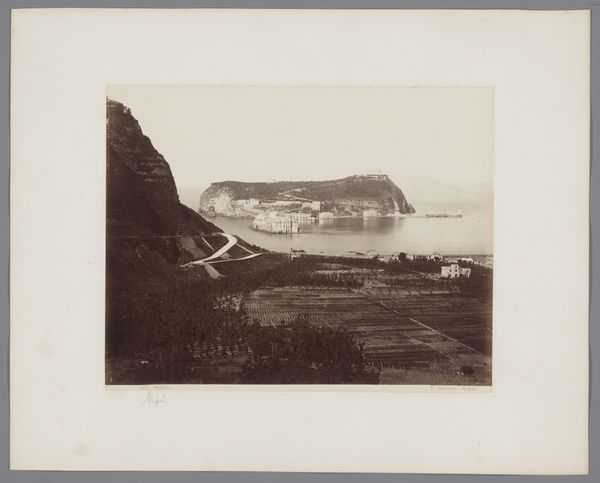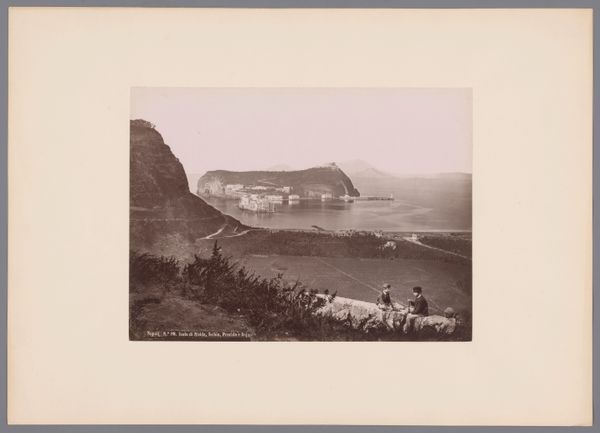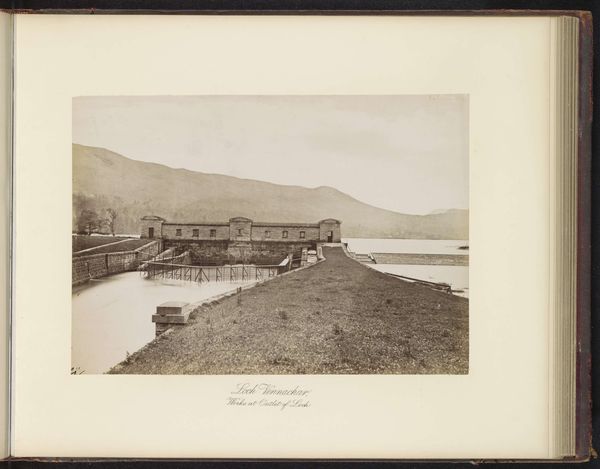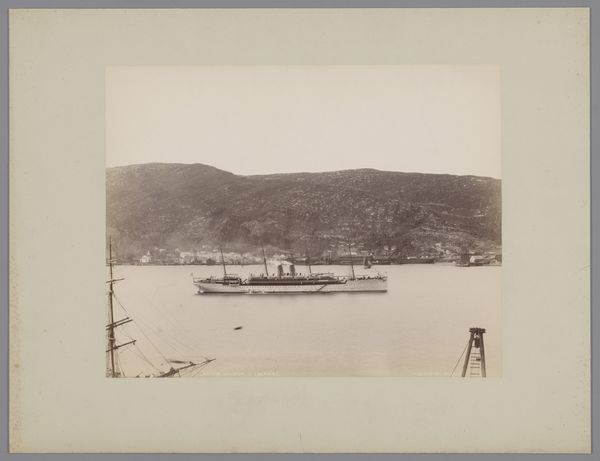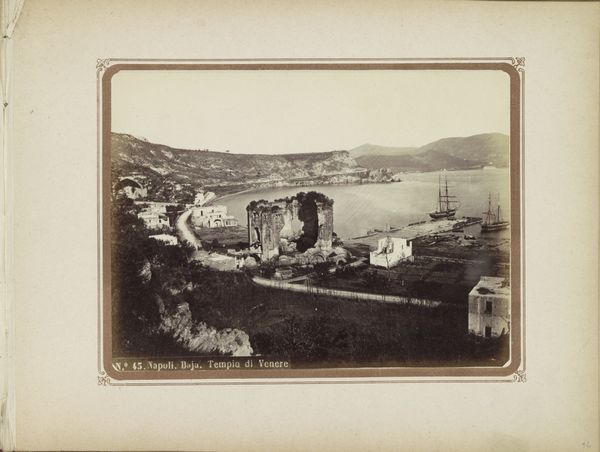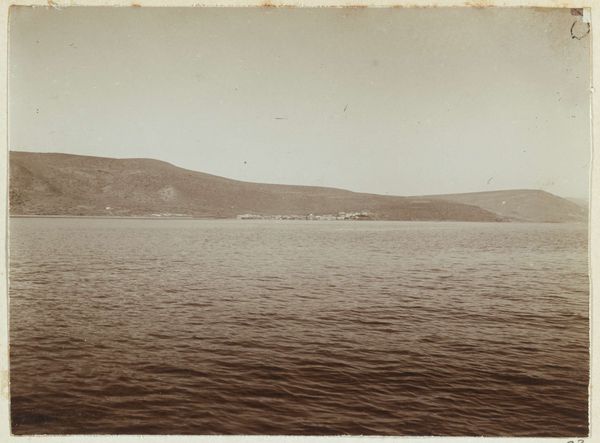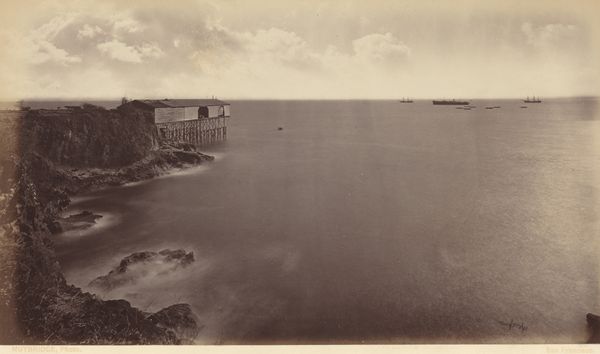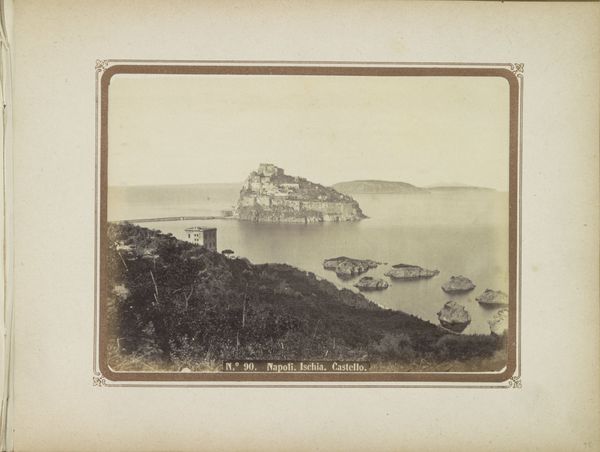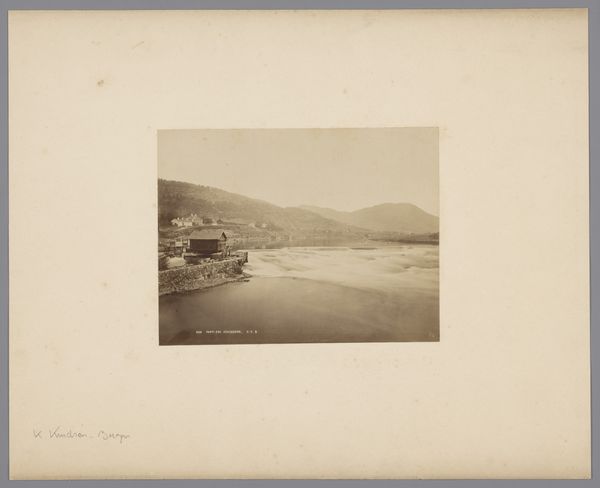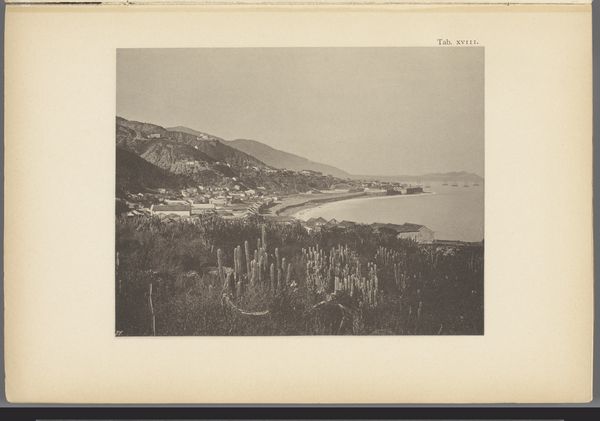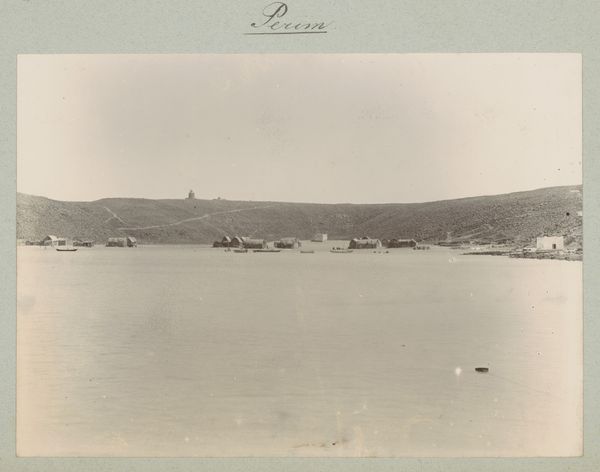
Strait of Carquennes, from South Vallejo 1868 - 1869
0:00
0:00
photography, gelatin-silver-print
#
landscape
#
photography
#
gelatin-silver-print
#
hudson-river-school
#
building
Dimensions: Image: 40.3 x 52.5 cm (15 7/8 x 20 11/16 in.) Mount: 54.4 x 66.4 cm (21 7/16 x 26 1/8 in.)
Copyright: Public Domain
Curator: Carleton Watkins's "Strait of Carquennes, from South Vallejo," dating from around 1868 to 1869, captured using the gelatin-silver print method, really draws you into a moment in time. The image is currently housed right here at the Metropolitan Museum of Art. Editor: It has a quiet, almost hushed feel, doesn't it? The light is soft, making the scene feel distant, like a memory fading into sepia tones. What a fascinating meditation on distance and observation. Curator: Watkins was working at a pivotal moment in California's history. The Gold Rush had transformed the landscape, both physically and economically. This image, part of the Hudson River School aesthetic, reflects the evolving relationship between industry and the sublime. Watkins documents a moment of incredible industrial growth while still framing it in the artistic tradition of landscape painting. Editor: You're so right. I can feel the shift you’re talking about. I keep thinking about what it must have been like to actually stand where Watkins stood with that bulky camera of his, watching a new world unfolding. There’s something a little melancholic about the smokestack and warehouses dwarfed by nature, even if they were built by and from nature, and Watkins presents the modern scene like that's inevitable. Curator: The very act of photographing was entangled with this transformation. Photography became a tool for documenting progress, promoting investment, and shaping perceptions of the West. His work was, whether intentionally or not, about convincing viewers that settling and developing California was progress. He also contributed to the promotion of California and the West, influencing investment and immigration. Editor: Perhaps that melancholic tone is just an admission of guilt? Or maybe it is the romance of the frontier already ending, even as it starts anew, as so often seems the case. There is something poetic there. Curator: Indeed. It gives you insight into how a place becomes not just land but also a repository of stories and expectations. Watkins masterfully turns this landscape into a statement about the era's ambitions and anxieties. Editor: I'm going to keep wandering here for a few minutes more to dwell on the ambiguities of it all. Thanks for this perspective!
Comments
No comments
Be the first to comment and join the conversation on the ultimate creative platform.
